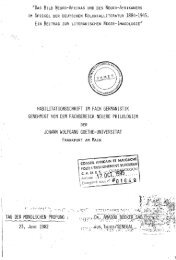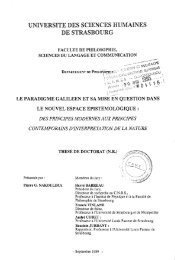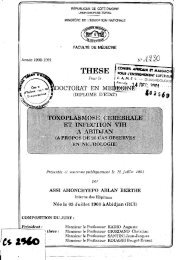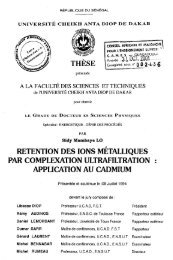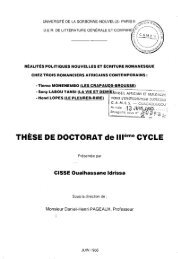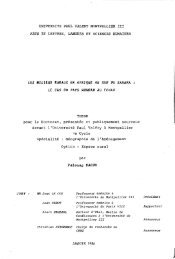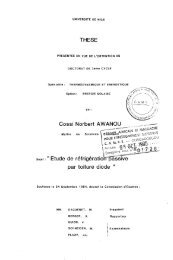by
by
by
Create successful ePaper yourself
Turn your PDF publications into a flip-book with our unique Google optimized e-Paper software.
1. INTRODUCTION<br />
An as yet unidentified Arthrosporae fungus was encountered accidentally <strong>by</strong> Tsuneda and<br />
Hiratsuka 1 at the Northern Forest Research Centre in Edmonton. The discovery,<br />
reminiscent of the PeniciIlium case,l was made when a culture of a pathogenic fungus,<br />
Ceratocystis ulmi, became contaminated with the unknown fungus. It soon became<br />
apparent that the contaminant, when grown on potato dextrose agar (PDA), produces<br />
substances which inhibit the growth of several tree disease causing fungi of the<br />
Ceratocystis family.J,4<br />
C, ulmi represents the perfect stage of an Ascomycetous fungus described as<br />
Ceratostomel la ulmi <strong>by</strong> Buisman in 1923. This fungus also reproduces <strong>by</strong> means of an<br />
imperfect stage, Pesotum ulmi,5 described <strong>by</strong> Schwarz in 1922. C. ulmi induces vascular<br />
disease in elm trees. The disease has become known as the "Dutch elm disease", because it<br />
was a Dutch botanist who f irst called attention to the disease in Holland in 1919. 6 The<br />
infection was soon thereafter discovered in several parts of Europe and Asia.<br />
The earliest known cases of the disease in North America were recorded in 1930<br />
in Cleveland and Cincinnati. From 1930 to 1978 the disease spread over several parts of<br />
the continent.<br />
The occurrence of Dutch elm disease in Canada was first observed in 1944 in the<br />
Province of Quebec. From 1944 to 1975, the disease gradually spread over other parts<br />
of Canada. The most recent incidence of the disease was noted in Manitoba in 1975.<br />
Newfoundland, Nova Scotia and the three most western provinces are still relatively free<br />
of the disease.* Elm trees are found in most parts of the north temperate zone and are<br />
planted in urban areas and in the countryside to provide shade, shelter and beauty.<br />
The Dutch elm disease. called "the disease of the 20th century" is the most<br />
devastating world-wide epidemic plant disease, Since its discovery in 1919, Dutch elm<br />
disease has killed millions of elm trees in Europe and North America, causing billions of<br />
dollars in direct economic losses and inflicting inestimable damage to the aesthetic quality<br />
* The infections are already recorded in California and Manitoba. There is no<br />
reason to believe that the Dutch elm disease will not spread to the three most<br />
western provinces,



